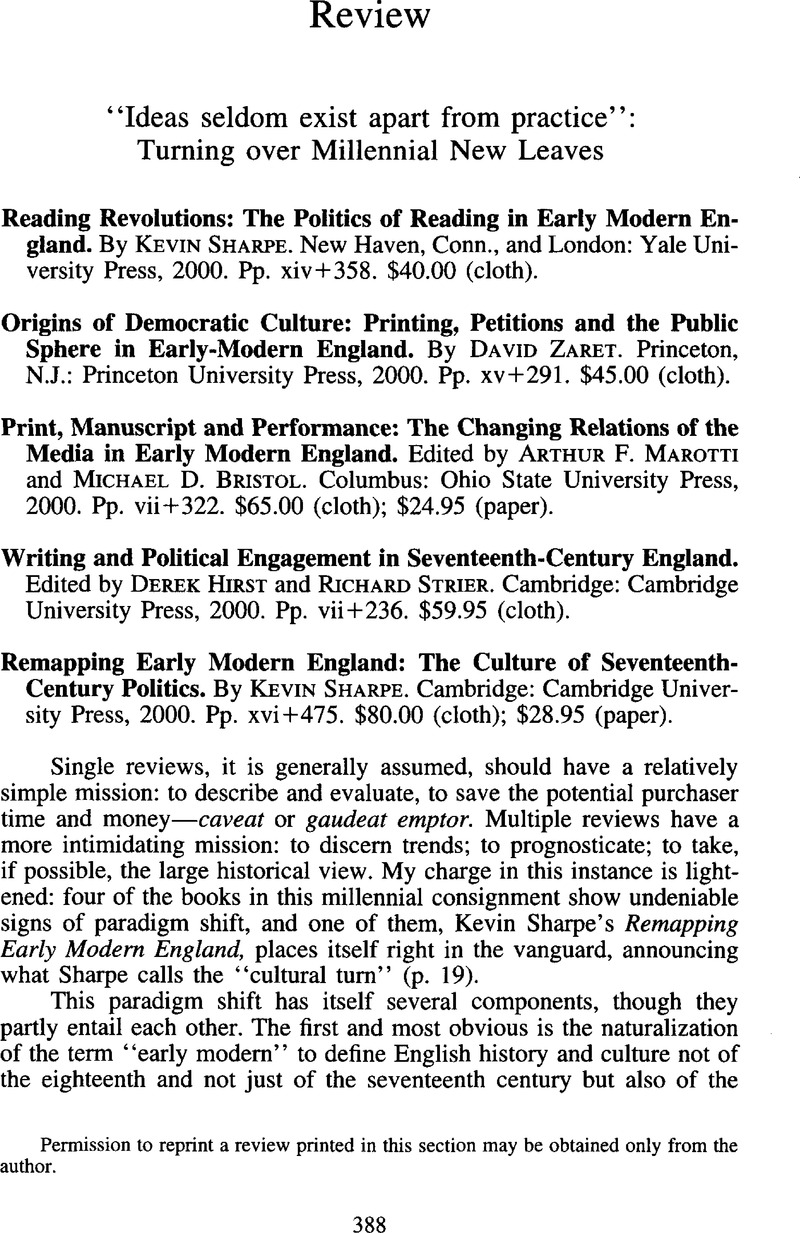Published online by Cambridge University Press: 10 May 2013

1 Levy, F. J., Tudor Historical Thought (San Marino, Calif., 1967)Google Scholar.
2 Love, Harold, Scribal Publication (Oxford, 1993)Google Scholar.
3 For the scriptorial archive and rolling archetype, see Love, p. 346; for “the porno-politics of the lampoon,” see p. 175.
4 Beal, Peter, In Praise of Scribes: Manuscripts and Their Makers in Seventeenth-Century England (Oxford, 1998)Google Scholar, and Index of English Literary Manuscripts (London and New York, 1993)Google Scholar.
5 Johns, Adrian, The Nature of the Book: Print and Knowledge in the Making (Chicago, 1998)CrossRefGoogle Scholar.
6 Eisenstein, Elizabeth, The Printing Press as an Agent of Change (Cambridge, 1979)Google Scholar.
7 Tribble, Evelyn, Margins and Marginality: The Printed Page in Early Modern England (Charlottesville, Va., 1993)Google Scholar; Watt, Tessa, Cheap Print and Popular Piety, 1550–1640 (Cambridge, 1st paperback ed., 1994)Google Scholar.
8 Grafton, Anthony and Jardine, Lisa, “‘Studied for Action’: How Gabriel Harvey Read His Livy,” Past and Present, no. 129 (1990): 30–78Google Scholar.
9 Raymond, Joad, The Invention of the Newspaper: English Newsbooks, 1641–1649 (Oxford, 1996; reprint, 1999)Google Scholar; Sommerville, C. J., The News Revolution in England (Oxford, 1996)Google Scholar; and Weber, Harold M., Paper Bullets: Print and Kingship under Charles II (Lexington, Ky., 1996)Google Scholar.
10 Wallace, John, Destiny His Choice (Cambridge, 1968)Google Scholar.